Psoriasis
Psoriasis is a long lasting, non contagious autoimmune disease characterized by raised areas of abnormal skin. It is a skin disorder that causes skin cells to multiply up to 10 times faster than normal. This makes the skin build up into bumpy red patches covered with white scales. On darker skin, the patches can be purplish, violet, or brown with gray scales.
They can grow anywhere, but most appear on the scalp, elbows, knees, genitals and lower back. Psoriasis cannot be passed from person to person. it does sometimes happen in members of the same family.
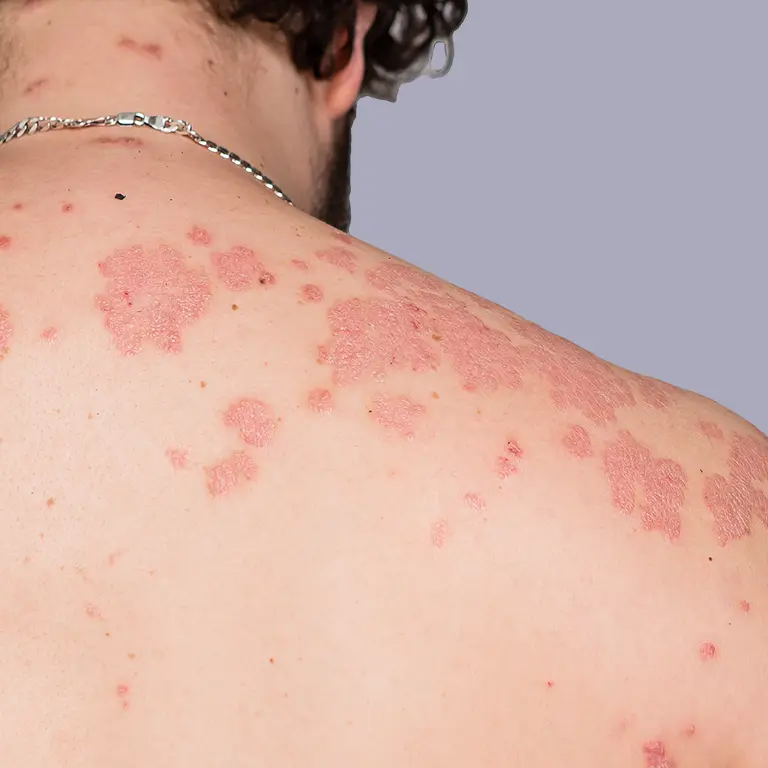
Is Psoriasis a Chronic Disease?
Yes. Psoriasis usually appears in early adulthood. For most people, it effects just a few areas. In severe cases, Psoriasis can cover large parts of the body. The patches can go and then come back throughout a person's life.
Psoriasis is a lifelong condition that can go through periods of remission and flare ups, but there is currently no cure.
Psoriasis Symptoms
The symptoms are dependent on the type of Psoriasis you have. The most common symptoms of Plaque Psoriasis (which is the most common type) Include;
Plaques of red skin, often covered with silver -coloured scales. In darker skin tones, plaques maybe brown or purplish with grey scales. These plaques maybe itchy and painful and they sometimes crack and bleed. In severe cases they will grow and merge, covering large areas.
Disorders of the fingernails and toenails, including discoloration and pitting of the nails. The nails may also crumble or detach from the nail bed.
Plaques of scales or crust on the scalp.
People with Psoriasis can also get a type of arthritis called Psoriatic Arthritis. It causes pain and swelling in the joints. The National Psoriasis Foundation estimates that between 10% to 30% people with Psoriasis also have Psoriatic Arthritis.
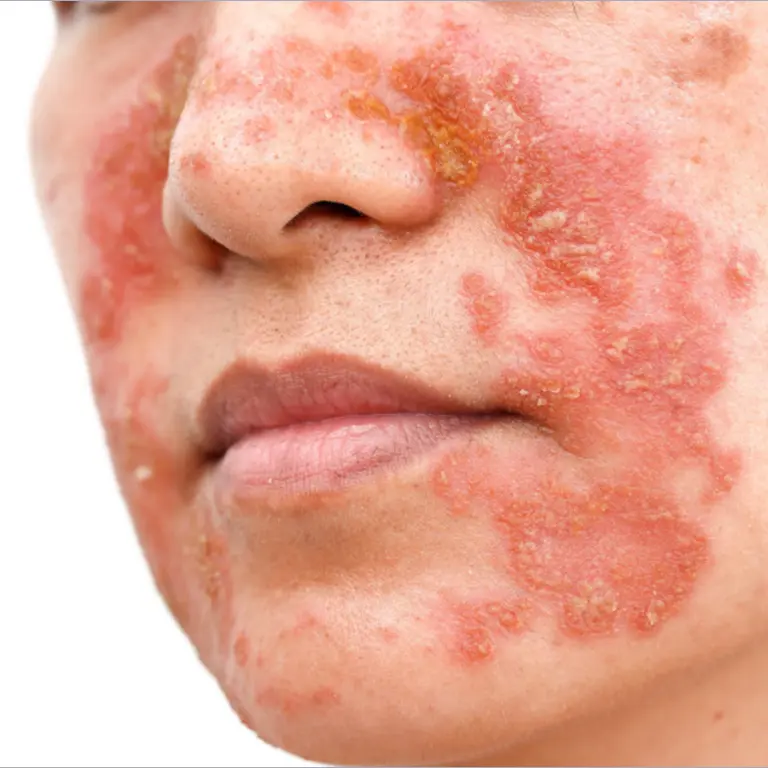
Pustular Psoriasis
Causes discolored, scaly skin with tiny pustules on the palms of the hands and soles of the feet (Palmoplanter Psoriasis).

Guttate Psoriasis
This often starts in childhood or young adulthood, causes small spots that are pink, red, brown or purple in colour, mainly on the torso and limbs. Triggers may be respiratory infections, Strep Throat, Tonsilitis, stress, injury to the skin and taking antimalarial and bet-blocker medications.
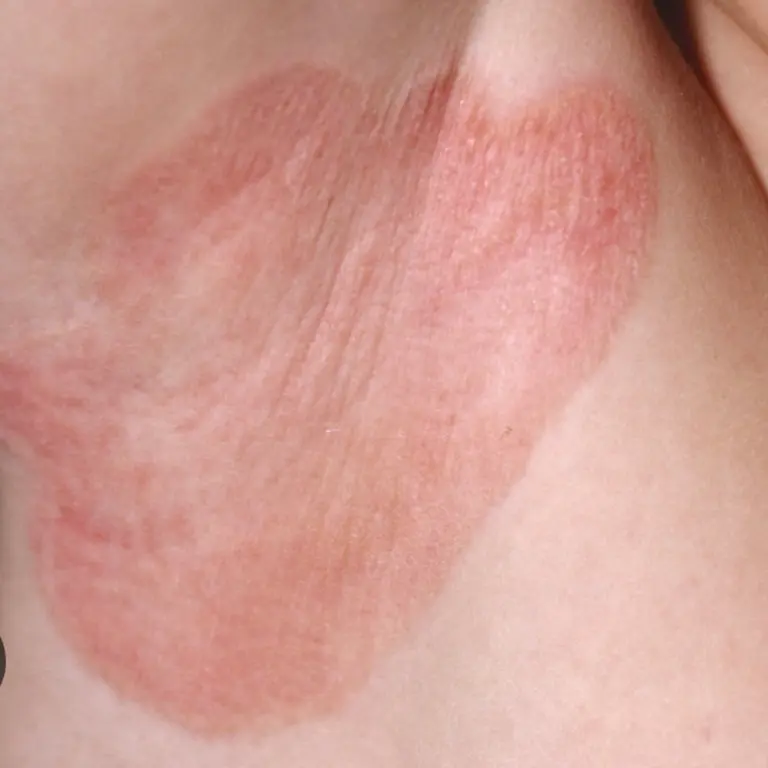
Inverse Psoriasis
Which causes discolored, shiny lesions that appear in skin folds, such as the armpits, groin and under the breasts. On light skin, the lesions will be bright red. on darker skin, they'll be darker than the surrounding skin and can be purplish or brown in colour.
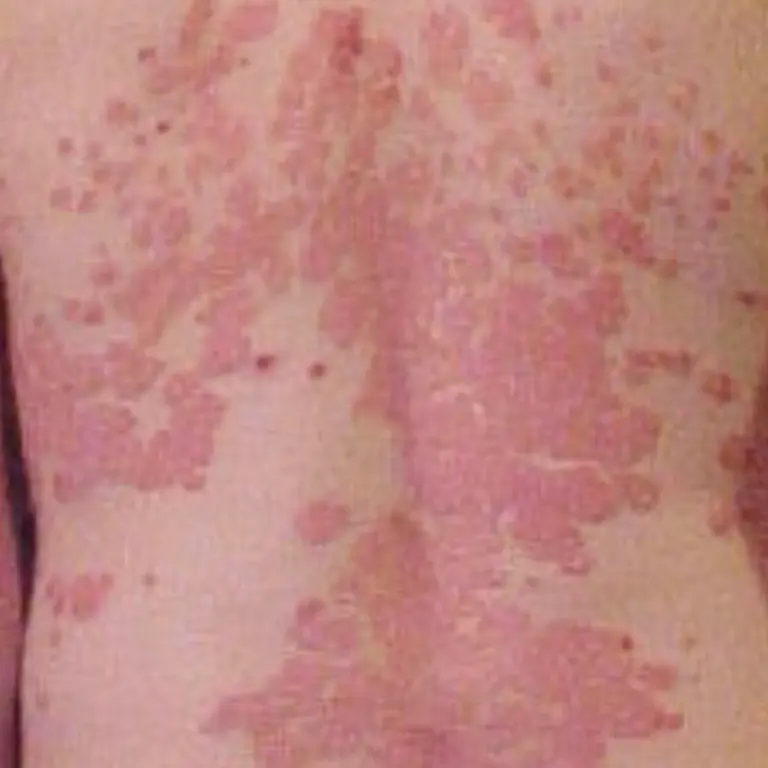
Erythrodermic Psoriasis
This causes intense discoloration of the skin and shedding of scales in sheets. Its triggered by severe sunburn, infections, certain medications and stopping some kinds of Psoriasis treatment. It needs to be treated immediately because it can lead to severe illness.
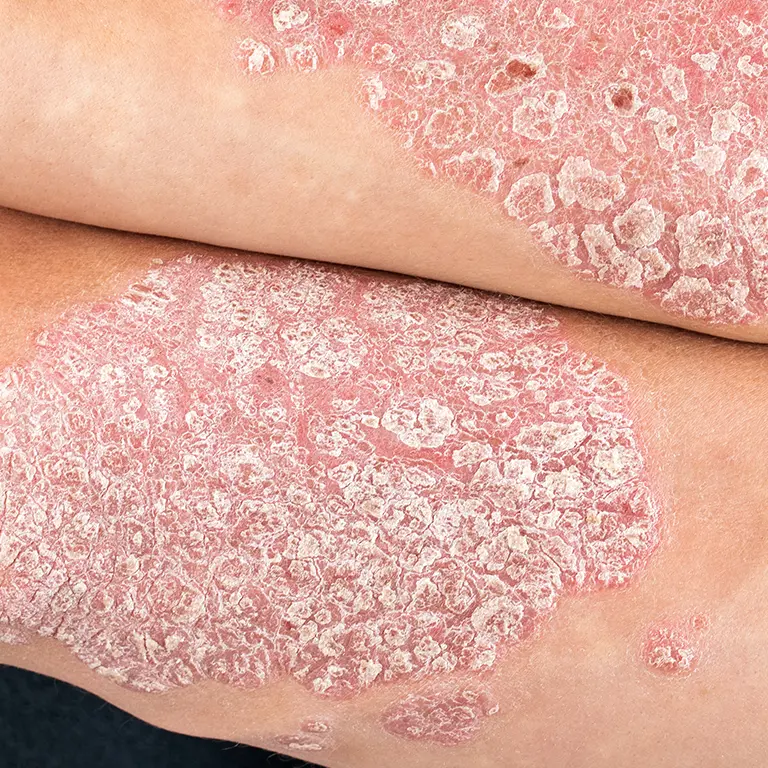
Plaque Psoriasis
Plaque psoriasis is the most common form of psoriasis. Its symptoms are dry skin lesions, known as plaques, covered in scales.
They normally appear on your elbows, knees, scalp and lower back, but can appear anywhere on your body. The plaques can be itchy or sore, or both. In severe cases, the skin around your joints may crack and bleed.
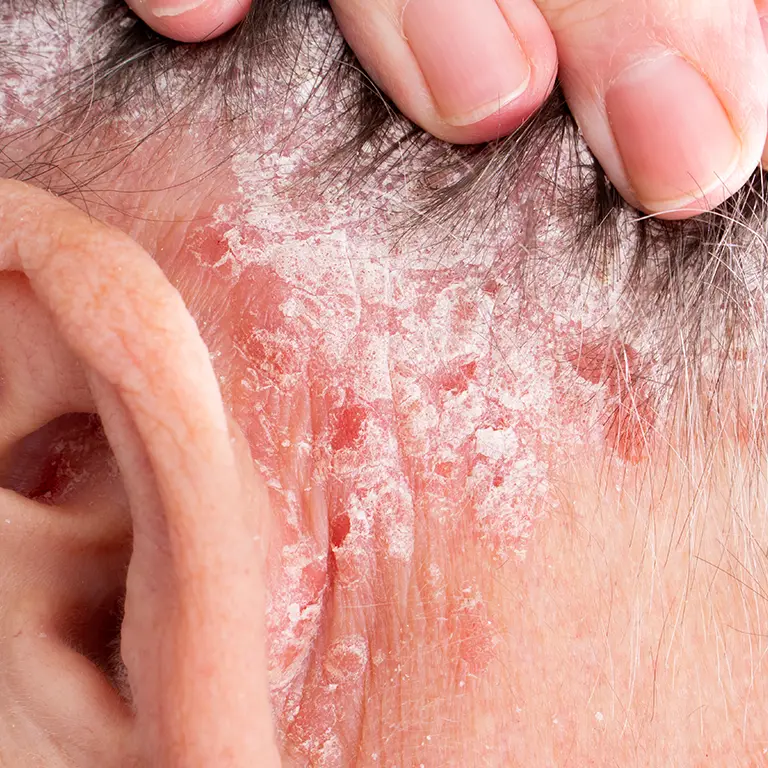
Scalp Psoriasis
Scalp psoriasis is a type of plaque psoriasis. It can occur on parts of your scalp or on the whole scalp. It causes patches of skin covered in thick scales.
Some people find scalp psoriasis extremely itchy, while others have no discomfort. In extreme cases, it can cause hair loss, although this is usually only temporary.
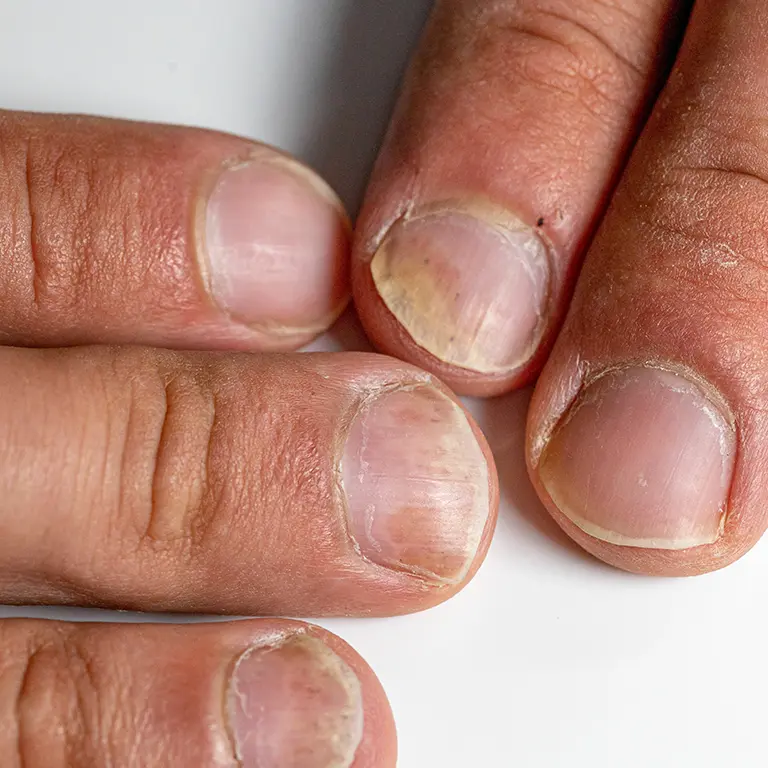
Nail Psoriasis
In about half of all people with psoriasis, the condition affects the nails. Psoriasis can cause your nails to develop tiny dents or pits, become discoloured or grow abnormally.
Nails can often become loose and separate from the nail bed. In severe cases, nails may crumble.
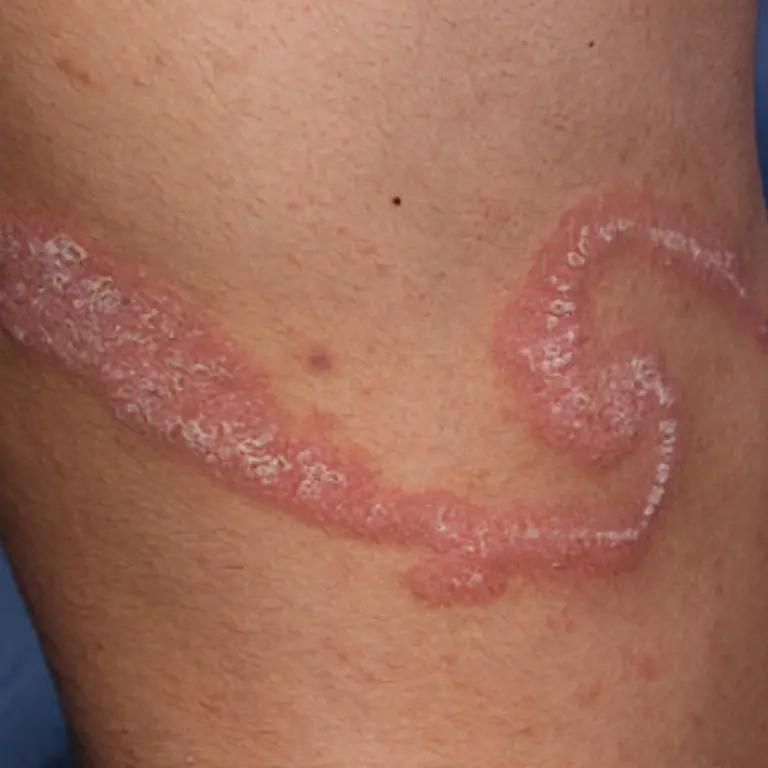
Linear Psoriasis
Linear Psoriasis is extremely rare form of the disease. A combination of history, skin examination and histopathology are required to ensure correct diagnose and treatment.
